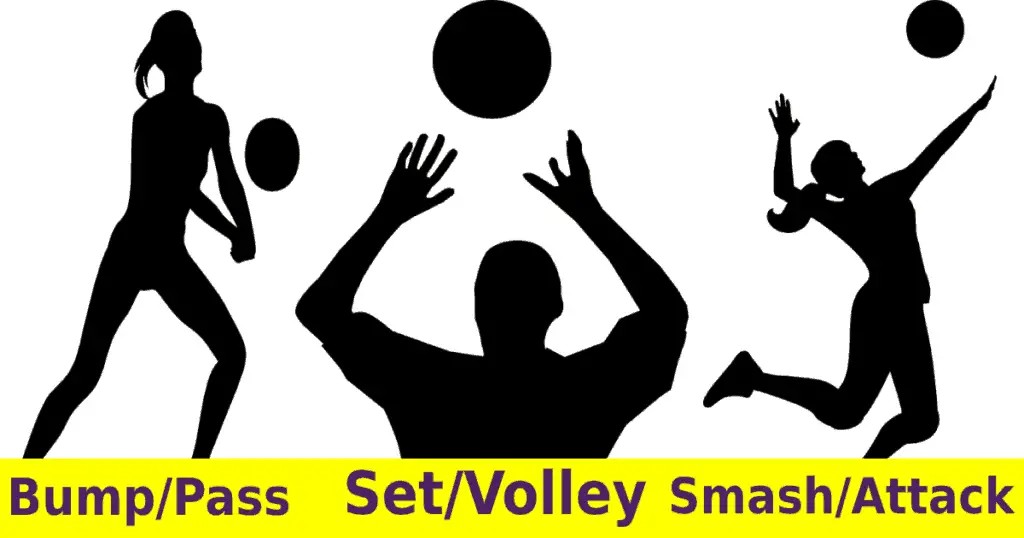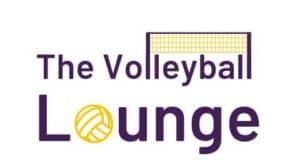For most people unfamiliar with the sport of volleyball, the term contact can be a confusing remark. In the traditional sense, a contact sport is defined as a sport in which the participants necessarily come into bodily contact with one another. The question I want to tackle is, does this definition apply to Volleyball?
Volleyball can not be classified as a contact sport as the sport does not necessitate nor allow bodily contact between each participant, although it can happen. Instead, the terminology “contact” in volleyball is mainly used as the term to describe the handling of the ball.
Understanding this point probably does not answer all your questions about contact in volleyball. Let’s explore further the term contact and its different appearances, and where and when they occur in volleyball. Let’s also have a look at the official rules around contacts in volleyball.
Why Volleyball is Not a Contact Sport
If we refer to the definition of dictionary.com, a contact sport is explained as any sport in which physical contact between players is an accepted part of play. Examples of contact sports are Hockey, Football and Lacrosse. Contact sports include, as a core part of the game, the inevitability and the high probability of entering in contact with other players.
For its part, volleyball can not be defined as a contact sport because it never allows for voluntary contact between players since all parts of playing the game remove the possibility of interacting physically with the other team. Volleyball does not incorporate any actions that would have opposing players making contact as a means to play the game, just like tennis or baseball.
Where and When Physical Contact May Happen
We just went over the fact that contact in volleyball is not a regular part of the game, but this does not mean it never happens, only that it is unlikely, and discouraged. So now, let’s address the scenarios where it is possible to enter in contact with another player.
As part of the game, there is a possibility that players make contact with each other when playing at the net. When a player is trying to make a point by attacking the ball, or when trying to block a ball at the net, any effort to jump could be miscalculated and end up with a physical interaction between players. This, unfortunately, is the leading cause of injury in the sport. To be clear, when this does happen, it most likely is not a voluntary act.
The two teams are clearly separated on a side of the court where they are not to traverse, for they would be committing a fault and losing the point. A net being the only barrier means there is no other efficient way of preventing accidents of the sort from happening.
The Common Definition of the Term Contact in Volleyball
As I mentioned in my original answer above, contact is a term used in volleyball to identify the handling of the ball in play. It is fair to say that the term contact is a core part of the rules of volleyball since it appears over 45 times in the FIVB’s 90-page rulebook of the game. It wouldn’t be a stretch to say that the term contact in volleyball is an important one. Why is it the case?
First, I would like to refresh our knowledge of volleyball rules. The main objective of volleyball is to make a point by either successfully landing the ball on the opponent’s court or when the opposing team commits a fault. To land a ball on the opponent’s court, both teams have access to a maximum of 3 hits or contacts. Contact refers to the handling moves or ‘hits’ that players can use. These include the pass/bump, the set/volley, and the smash/attack/hit.

Illegal Contacts in Volleyball
In the point above, I listed the different common types of contact in volleyball. These were the preferred types of hits but the list could be a lot more encompassing. To be clear, other contacts could be just as legal but they would simply fall under these umbrella terms. Since this isn’t too clear, new players often question what constitutes a legal and illegal contact in volleyball, so let’s clarify that further.
As a general rule, almost all contacts in volleyball are legal, regardless of the body part used. You can kick, headbutt or elbow the volleyball without any penalty. The reason you don’t often see these moves is because the sport has evolved around the importance of controlling the movement of the ball. The bump, set and smash are here to stay since they have proven to be the more efficient contacts to control the ball.
There are many rules regulating the various contacts with the ball. Often a certain context will influence the legality of the contact, and it can be confusing. So let’s explain some of the illegal hits you must know in volleyball:
4 contacts. The core gameplay of volleyball is built around the notion that a team as 3 contacts available to them before they need to send the ball on the opposing side of the court. Whenever a team contacts the ball a fourth time, they automatically lose that point.
Double contact. A player cannot contact the ball twice in a row. If the handling of the ball causes it to touch two different body parts, it is considered a double contact. There are two exceptions to this rule. 1. The block is not considered one of the three contacts allowed. A player that blocked the ball can play it once more right away. 2. The first hit of a team (of its three allowed) may contact various parts of the body consecutively as long as they are part of one action. This exclusively applies when receiving a serve or a spike. A ‘Double contact’ is considered a ball-handling error.
Carry/Lifting. You cannot at any time hold the ball during the play. The ruling can also be expanded to include a contact where the ball does not rebound off the body. This often results in being a judgment call from the referee. In general, a carry is likely to be called any time a player attempts to prop up the ball with his palm or body instead of a contact that bounces off. In the same regard, a lift can be called on a ball rolling off your body. A ‘Lifting’ is considered a ball-handling error.
Reach. A reach is called on a player who attempts to touch a ball that is still on the other side of the net. You must wait for the ball to cross the vertical line of the net before contacting a ball. This ruling does not apply after the opposing team has completed their 3 contacts.
Net touch. No player can make contact with the net under any circumstance (The Only exception being if the ball drove the net to touch the player’s body). This rule may depend on your area because it has changed a lot over the years. It is a good rule to know since it now seems more consistently reinforced at higher levels of competition.
Here are some more niche rules around contacts with the ball or court:
- A player cannot attempt to block or attack a serve.
- A player in a rotation behind the attack line cannot jump at the net to play a ball. He needs to be behind the attack line to do so or has to have jumped before crossing the line. This includes trying to attack or block a ball.
- A player’s feet must not traverse the net line. I mentioned this rule earlier and it is very important since contact between players at the net is among the highest causes of injuries in volleyball.
For more information on the rules of volleyball, you should read the official rules of the “Fédération Internationale de Volleyball”. The FIVB is the international governing body of volleyball competitions.
